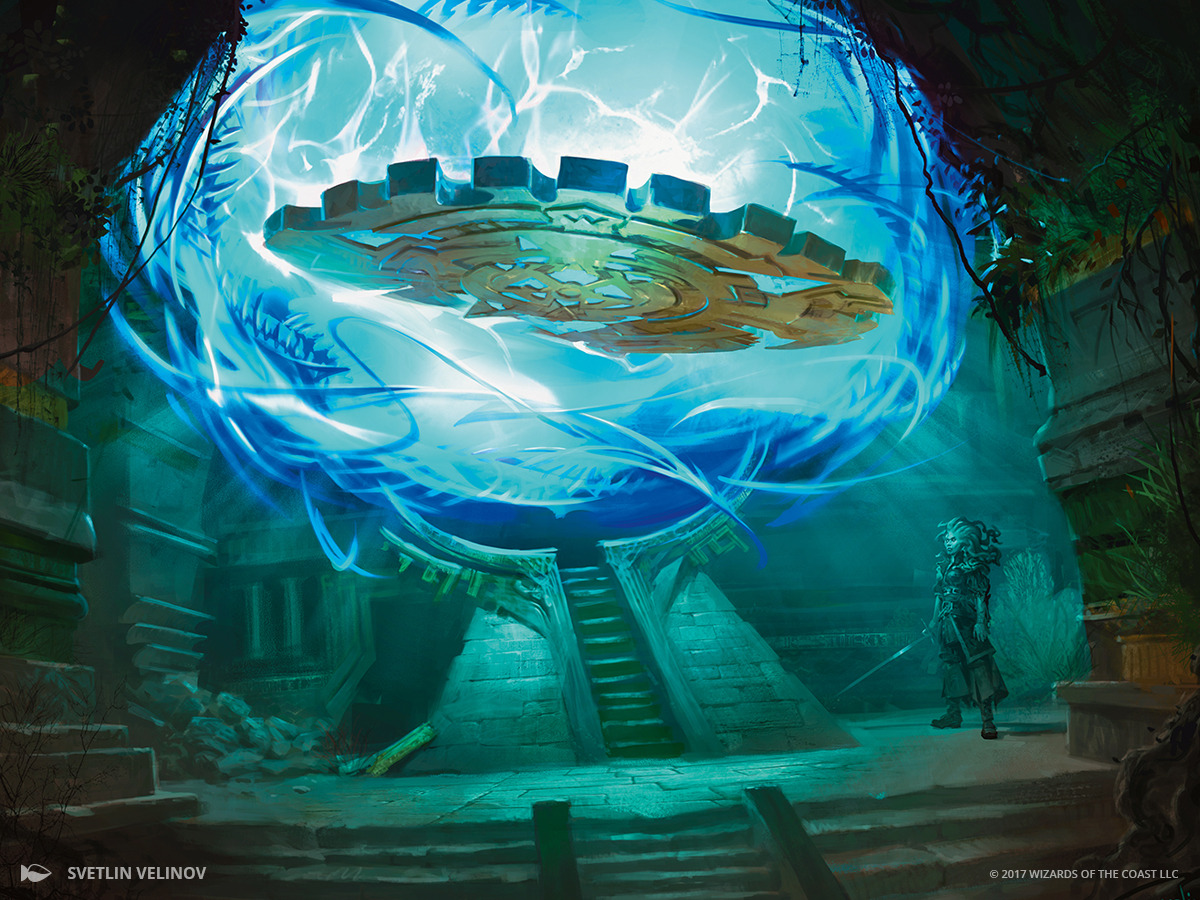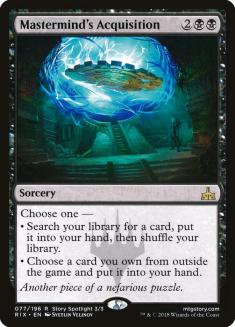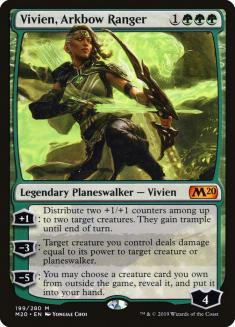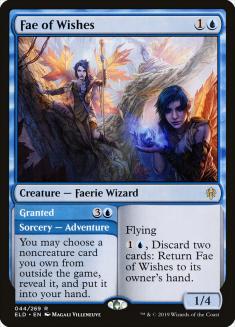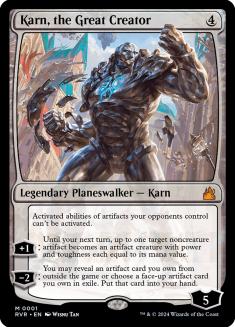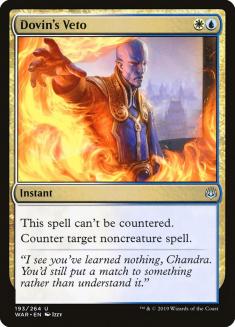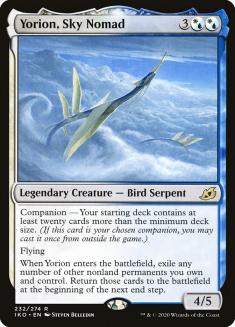Best-of-One has been a constant fixture of Magic Arena (Arena) since the program’s inception, but I know that there are a lot of people (myself included) who mostly prefer Best-of-Three, since that’s the format of every tournament. Now, with the advent of the Arena Open this weekend, there’s finally a reason to focus on Best-of-One Constructed.
If you’re not a Best-of-One player, you might consider just joining Day 1 of the tournament with a regular deck. While this definitely could work, it’s not the optimal approach, as there are a few quirks in Best-of-One that change the evaluation of certain decks, cards, and styles. In today’s article I’m going to go over the biggest differences between Best-of-One and Best-of-Three and how they can reflect in your deck choice.
1. The Hand Algorithm
Since you’re only playing one game, having mana issues can feel even worse than in regular Magic — after all, if you don’t draw a second land, that’s it, the match is done. Because of this, Best-of-One in Magic Arena has a “hand-fixing algorithm.”
The way the algorithm actually works is not public, but my suspicion is that it’s something like this:
First, it generates some number of opening hands, at least two, but it’s possible that it’s three or four or five — we don’t know this, but given how few times I have a bad hand in Best-of-One, I imagine it’s more than two. Then, it chooses between them according to how probable of a land/spells ratio they have. This doesn’t mean that you’ll always get the statistically more likely ratio — just that you’re more likely to.
For example, imagine a deck that has 25 lands. The computer then generates two random opening hands — for the sake of this example, they’ll be a one-land hand and a six-land hand. With 60 cards and 25 lands, you’re roughly 10% to get a one-land hand, and 1% to get a six-land hand. Therefore, the computer would be roughly 90% to assign you the one-lander and 10% to assign you the six-lander, since it’s a distribution that’s ten times more likely.
As to how this affects you in practice, two main things:
First, the prevalence of good hands is much higher. Sometimes we can keep a hand thinking that, if they stumble, we have a shot. No one stumbles in Best-of-One — people always have a good hand. If you’re playing versus an aggressive deck (and you can know this because of companions — for example, if they reveal Obosh, the Preypiercer they’re definitely an aggressive deck, and if they reveal Lurrus of the Dream-Den they’re almost always an aggressive deck), you need a good hand or you’ll be dead before you draw out of it.
Second, it makes aggro decks a little better. This is for two reasons:
1. When you’re playing aggro, the percentage of cards in a game that are affected by the algorithm is higher. Aggro decks live or die by their opening hands, while control decks have Temples; Omen of the Sea; Teferi, Time Raveler; Narset, Parter of Veils; and a variety of other cards that let them improve their opening hands. In fact, part of the strength of a control deck is that it has more control over what it’s drawing over the course of the game, and part of the weakness of aggro decks is that they’re powerless to stop their own bad draws. With the hand-fixing the bad draws happen less often.
2. The algorithm fixes a higher percentage of the hands that aggro decks would mulligan. When you’re playing aggro, you care a lot about the number of lands in your opening hand. You don’t play that many, so one- and two-landers are common, and you can’t afford to flood (you’d mulligan most five-landers, for example). When you play control, you will often be happy keeping a variety of land counts, as long as you have the right cards. For instance, you’re happy to have most two-, three-, four- or five-land hands if they have Shatter the Sky against an aggro deck, and you’ll mulligan a hand full of Mystical Dispute, Elspeth Conquers Death, and Agent of Treachery against the same deck regardless of how many lands are in it. The algorithm doesn’t make you any more likely to draw specifically Shatter the Sky, so you’re still mulliganing some of the hands based on this.
The next big change is that there’s no sideboarding. This impacts decks in a couple of different ways. For example, Wish-type cards become better. There’s no sideboarding, but there can still be a sideboard. Normally, having a Wish sideboard is a cost — you need to have a variety of cards for different situations, which means you lose some percentage points during Games 2 and 3 — but in Best-of-One, there is no cost, as you were not going to sideboard anyway.
Back at the Mythic Invitational last year (which to my knowledge was the only major tournament to ever have used Best-of-One), Mastermind’s Acquisition was one of the most important cards in Esper decks. It let them play a variety of answers that most other decks just didn’t have access to without worrying that these super narrow cards would take up valuable sideboard slots.
Let’s take a look at Andrea Mengucci’s winning Esper deck:
Planeswalkers (5)
Lands (25)
Spells (30)

Mengucci only played one Mastermind’s Acquisition, but some teams played two (we did, for example). The card saw virtually zero play in Best-of-Three Standard but was almost omnipresent in Best-of-One.
In Ikoria Standard right now, we have three different cards that can access sideboards — Vivien, Arkbow Ranger; Karn, the Great Creator; and Fae of Wishes. Vivien and Karn aren’t the most popular right now (though they have seen competitive play already), but there’s a deck that’s already playing four Fae of Wishes:
Creatures (24)
- 4 Lovestruck Beast
- 4 Beanstalk Giant
- 4 Edgewall Innkeeper
- 4 Bonecrusher Giant
- 4 Fae of Wishes
- 4 Brazen Borrower
Lands (16)
Spells (20)

I believe Temur Adventures gets a reasonable boost in Best-of-One — it’s already a good deck in regular Ikoria Standard, and now one of its major has weaknesses simply disappeared. On top of that, people often brought in artifact removal against you, and now they just don’t have the opportunity to do that, so this deck is a big winner.
There are other decks that can play Fae of Wishes to good effect (mostly Fires of Invention decks). Unfortunately, Yorion Jeskai Lukka cannot play it (since hitting Fae of Wishes with Lukka, Coppercoat Outcast is a little worse than hitting Agent of Treachery), but regular Jeskai Fires can, and Yorion Grixis Lukka can as well (as a two-mana creature, Fae of Wishes fits perfectly into that deck and I’ve been experimenting with a version with four copies).
It’s also important to realize that, even though you might not have any cards that give you access to your sideboard, other people might, and you can use theirs. Back at the Mythic Invitational, for example, people who played Dire Fleet Daredevil would construct a sideboard for their Mono-Red deck, since they could theoretically steal someone’s Mastermind’s Acquisition. In Ikoria Standard, there are decks that can reliably steal Vivien, Arkbow Ranger with Agent of Treachery — these decks can and should have a sideboard built for these occasions. You might think it never comes up, but it literally happened to me a couple of days ago on ladder. I stole a Vivien with five counters and had nothing to get because I didn’t have a sideboard. After that, I built a sideboard for my Yorion Jeskai Lukka deck.
2. Situational Cards Get Worse
In normal Magic, you can afford to play narrow cards in Game 1 because you know you will be able to sideboard them out for Games 2 and 3. For example, take our Azorius Control list from World Championship XXVI. We had a lot of copies of Dovin’s Veto and Mystical Dispute in our deck, and we were fine with losing Game 1 to Mono-Red Aggro because we were sideboarding in over ten cards against them. In Best-of-One, this strategy just doesn’t work. You can’t “concede” Game 1 versus a deck with the expectation that you will be able to make up for it in Games 2 and 3.
For this reason I don’t like Yorion Bant Control in Best-of-One, even though I’ve been playing it in Best-of-Three. Bant Control needs to go out of its way to beat the other Yorion decks in Game 1. It needs to maindeck Neutralize, Dovin’s Veto, and Mystical Dispute. If it has these cards, it does beat the other Yorion decks, but it loses to the aggro decks, which you can only fix after sideboarding. Alternatively, you could build your Bant deck to beat aggro, but then you’d struggle versus the other Yorion decks and would need to fix that after sideboarding. Given that there’s no sideboarding, you can’t fix anything, so playing a deck that flat-out loses Game 1 to a particular strategy isn’t a good plan.
3. The Drawback On Companions Is Slightly Diminished
Playing a companion can bring many costs, and one of them is that you lose a sideboard slot. It’s not a huge thing, but it does help companions a little bit. Could this finally be the push that brings companions into playability???

4. The Drawback On Yorion, Sky Nomad Is Severely Diminished
Yorion, Sky Nomad is a special case when it comes to companions, as its restriction makes your entire sideboard worse. For example, adding a Glass Casket to a 60-card deck is simply more effective than adding a Glass Casket to an 80-card deck. Furthermore, Yorion decks usually need to have a broad sideboard since they have many cards that they need to take out against everyone. Because of this, Yorion decks run cards like Knight of Autumn, which have applications in different matchups, rather than narrower but more powerful cards such as Soul-Guide Lantern. Without sideboards, this isn’t something you need to worry about.
The conclusion from all this is that, as a general rule, aggressive decks are better and more prevalent. They benefit more from the hand-fixing algorithm, almost never have a good sideboard anyway, and don’t play nearly as many situational cards that they have to take out for Games 2 and 3. They just do their thing and they will do their thing well every single game.
For example, Lurrus Mardu Knights is a deck that I play against regularly on Arena in Best-of-One, but almost never in Best-of-Three. Here’s a sample list:
Creatures (31)
- 4 Knight of the Ebon Legion
- 3 Smitten Swordmaster
- 4 Inspiring Veteran
- 4 Venerable Knight
- 4 Worthy Knight
- 4 Fervent Champion
- 4 Blacklance Paragon
- 4 Rimrock Knight
Lands (20)

Much like Mardu Knights, there’s a variety of aggressive decks that mostly appear in Best-of-One — Mono-White Auras, Mono-Green Aggro, traditional Mono-Red Aggro (without Obosh), and so on. This means you should likely skew your deck more towards beating aggro than you would in Best-of-Three. For example, my Yorion Jeskai Lukka list cut one Elspeth Conquers Death and one Agent of Treachery for more removal spells as a concession to aggro decks. Other decks should do similar things. Jeskai Fires, for example, should play the maximum number of Deafening Clarions and Bonecrusher Giants, Temur Reclamation should consider playing more Storm’s Wrath, Mono-Red decks should play four Shocks, and so on.
Outside of the aggro decks, I believe the two with the most potential are Temur Adventures and Yorion Jeskai Lukka. Temur Adventures has a solid matchup against everything, few situational cards, and almost no sideboard, so it remains about as powerful as it was in Best-of-Three, and Yorion Jeskai Lukka benefits from other people being unable to run as much interaction as they normally do, as it’s a powerful goldfishing deck that you can tune to be reasonable against aggro as well. Personally I’m not a fan of Temur Adventures, so I’ve been playing Yorion Jeskai Lukka on ladder. This is my latest list:
Creatures (3)
Planeswalkers (12)
Lands (29)
Spells (36)

All in all, I’m looking forward to the Arena Open. We’ve never had something like this before where everyone can participate, so it’ll be interesting to see what people come up with. I hope to see you there!

